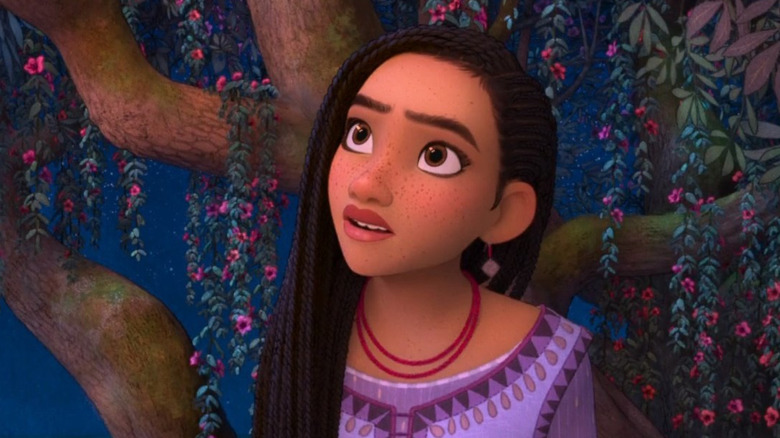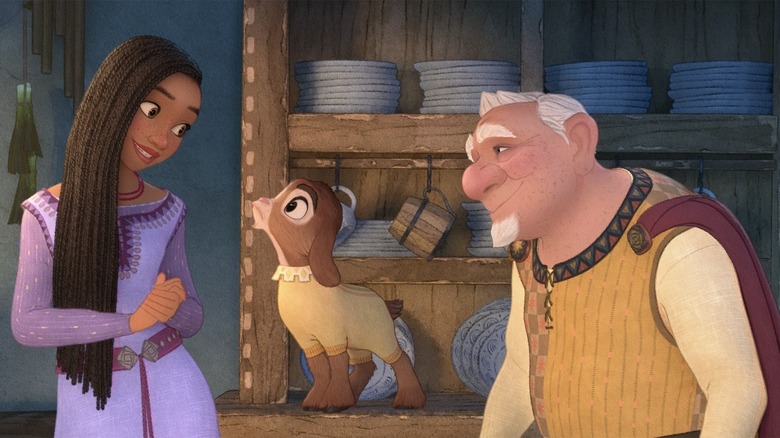What The Wish End Credits Scene Says About The Legacy Of Disney Animation
This article contains spoilers for "Wish."
"When You Wish Upon a Star" is considered by many to be the signature song of The Walt Disney Company. Written by Leigh Harline and Ned Washington for 1940's "Pinocchio," the song originally performed by Cliff Edwards as Jiminy Cricket has accompanied the production logos before most Disney films since the 1980s. The roaring sound of "When Dreams Come True" sets the stage to help transition audiences out of the real world, and into the land of Disney magic.
It's a tune synonymous not just with its source movie, but Disney as a brand, company, and cultural touchstone. So much so that when Disney put out "Once Upon a Studio" to honor 100 years of Disney Animation, the short ends with a century's worth of characters joined together in a singalong led by Jiminy Cricket. There's almost a Pavlovian response at this point to hearing the tune, a song that has become inexplicably intertwined in pop culture with feelings of childhood wonder, the limitless possibilities of imagination, and yes, the massive influence of a multi-billion dollar corporation.
Regardless of your personal feelings about the Disney Corporation, "When You Wish Upon a Star" has become the kind of song that has been absorbed across generations by cultural osmosis. The song is prominently featured in the post-credits scene of "Wish," Disney's 62nd animated feature film and the company's first original fairy tale. It could have been a simple homage in honor of the 100-year anniversary, but has instead provided a musing on the legacy of Disney animation.
Makes no difference who you are
In "Wish," Asha's 100-year-old grandfather has a wish to create something that inspires future generations. Based on his own visualization of the wish, he imagines that he will do so through music. At the end of the film, Grandfather Sabino is playing music for the city of Rosas, entertaining his neighbors with his fantastic lute playing — just how he imagined. This could have been a sufficient sign that Sabino's wish came true, but the filmmakers took it a step further. During the end credits, he sits and looks at the stars, playing his lute, and starts plucking what audiences will instantly recognize as "When You Wish Upon a Star."
This implies that Asha's grandfather got his wish not just to play music, but to inspire a generation, and canonically establishes him within the Disney universe as the true author of "When You Wish Upon a Star." As this song would eventually come to define Disney and inspire generations of fans, creatives, and Disney's legacy, we are all the result of Sabino's wish coming true. Another theme in "Wish" is that all of us are made of the same materials that make up stars (which is true!), which implies that we can all make our wishes come true because the magic of the stars is within us all. Sabino fulfills his wish by betting on himself and following his dreams, and the result is a song that has become everlasting. It's a full-circle moment for the story, Disney's place in culture, and the legacy of animation. A company that almost crumbled multiple times over the last 100 years, but continued to wish upon itself, and became the most powerful entertainment conglomerate in history.
Wish on yourself, kids. Dreams can come true.

